#IPET
Text
I have been wracked with fear and anxiety, tying into the grief I have been feeling for weeks.
A few nights ago I found myself unable to disengage from the fear. I cried out to the Netjeru for help, and found myself at the feet of Ipet. Her domain was the sky, and I could see the stars above and below me.
She comforted me, held me as I cried. She soothed me, and beckoned me to look at the space around us.
"See how brightly the sky shines for us? Each star burns and burns, tearing itself apart to produce such bright light. Is this what you are doing to yourself? Why must you tear yourself apart to shine for others and give them light?
"Stars will not burn forever- eventually they stall and falter, out of fuel and life. Do not burn yourself out like this. You have so much around you, feed your ka. Nurture yourself. Find what fuels you and move forward towards it."
9 notes
·
View notes
Text

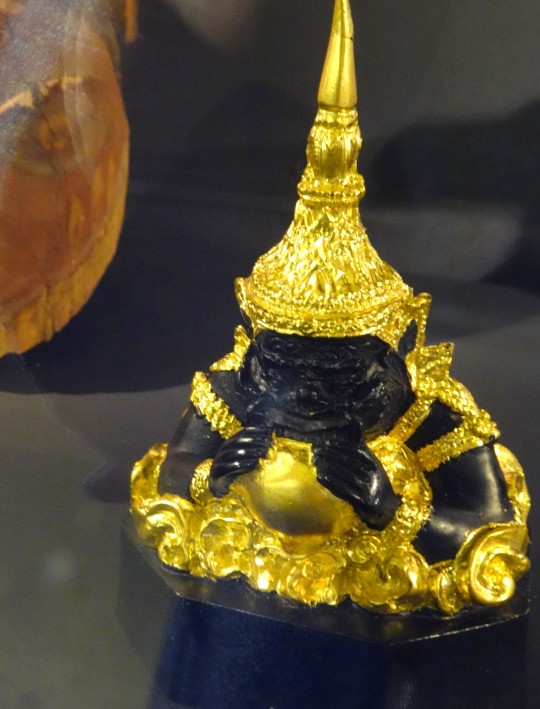
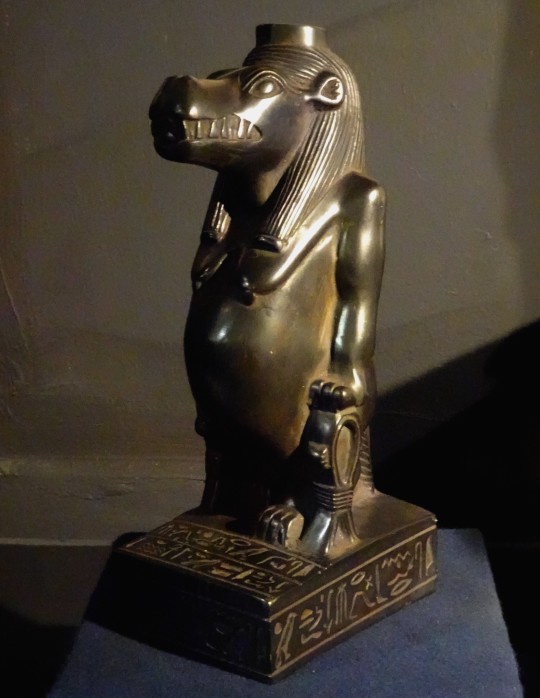
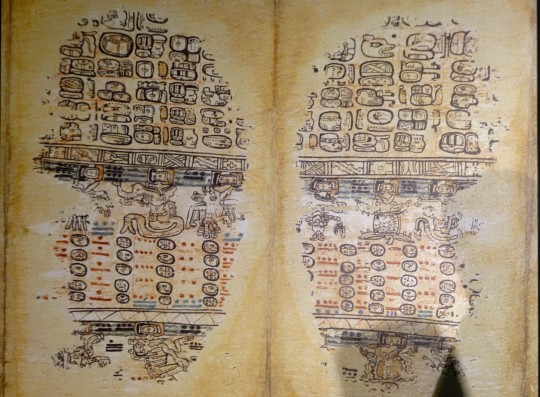
Marseille. Le Palais Longchamp abrite deux musées, ici le Muséum d'Histoire Naturelle. Ici, une mini-expo : "Nuit".
masque "gélèdé" yoruba, Nigeria
Rahu, dévoreur de soleil - Thaïlande. On y dit que le démon n'ayant pas de corps, le soleil, après l'éclipse, réapparaît donc rapidement...!
Thouëris-Ipet - Egypte, Nouvel Empire
Codex maya de Paris - Mexique, 13ème s.
#marseille#longchamp#palais longchamp#muséum d'histoire naturelle#nuit#archéologie#gélèdé#yoruba#nigeria#démon#rahu#thaïlande#mythologie#thouëris#thoueris#ipet#codex#maya
4 notes
·
View notes
Photo

Modern reconstructions of the sacred barques of Amon-Ra, Mut, and Khonsu for the "Opet Festival" performed on 2021 at Luxor for the reopening of "the Avenue of Sphinxes", the Southern Processional Route connecting 'Ipet-Resyt' (the "Temple of Luxor") and 'Ipet-Sut' ("Karnak") #iregipto #egyptpassion #mbplanet #history #historic #luxor #karnak #amonra #khunso #sphinx #ipet https://www.instagram.com/p/CisFdU1rs1M/?igshid=NGJjMDIxMWI=
7 notes
·
View notes
Text
Przykładowy IPET dla dziecka z niepełnosprawnością ruchową
Przykładowy IPET dla dziecka z orzeczeniem o potrzebie kształcenia specjalnego
Informacja o dziecku
Imię i nazwisko dziecka
Data urodzenia
Nr teczki dziecka
Data opracowania IPET
Nazwa i adres Poradni Psychologiczno – Pedagogicznej lub innej, pod opieką której znajduje się aktualnie dziecko
Nr orzeczenia o p. k. s……. Data wydania orzeczenia ……
Rodzaj niepełnosprawności: niepełnosprawność…

View On WordPress
2 notes
·
View notes
Photo
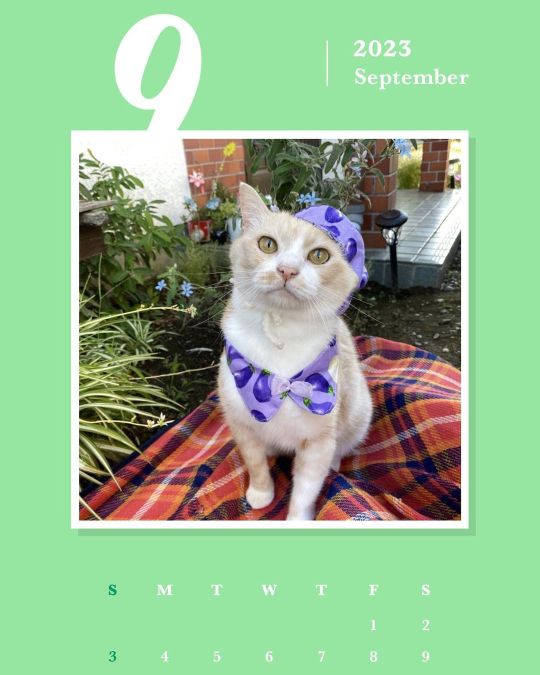
お庭のブルースターフラワーは幸せのシンボルらしいニャー❤️ #ipetうちの子フォトコンテスト2022 #Marron #坂口マロン #アイペット #ipet @ipet__ins #猫 #カレンダー #ブルースター https://www.instagram.com/p/CityXyepRg1/?igshid=NGJjMDIxMWI=
0 notes
Text
gw2 kind of works now :D
#im thinking of making a new character...#i wanna level an elementalist from 0 i have boosters but idk levelling is appealing to me#also ipetes just hit 60
4 notes
·
View notes
Text
//I'm saying it now before I forget. Some way, somehow, Lambda got his hands on and is in possession of the robot costume i-Cat from Burger King in 2008.

#//does it count as being canon if its an oc?#//ehhh whatever#//the point is he has another icat now#//it's a burger king toy quality version of an icat but its icat nonetheless#//i might go ahead and give him the witch one too that one is cute#//anyways went down a rabbit hole here and it ended in a youtube video talking about iPet accessories and thats how i found out about this#//so fuck it robot boy gets the robot cat dressed as a robot#backup log {ooc}
6 notes
·
View notes
Text
Karnak and Luxor Temple Complexes Egypt
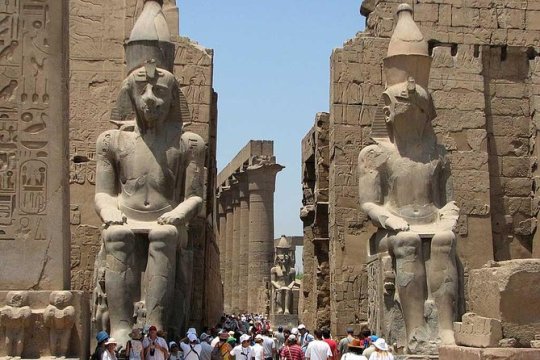
View On WordPress
#18th Dynastic Theban Triad#Abu El-Haggag Mosque#Alexander the Great#Amenhotep III of the 18th Dynasty#Amun The Creator God#Amun-Ra Suen God#Ancient Egyptian Culture#Ancient Egyptians#Ancient Greeks#Arabic word Khurnaq#Avenue of the Sphinxes#Colonnada of Amenhotep Ill and Tutankhamun#East Bank Nile River#Egypt Greco-Roman Period#Egypt Middle Kingdom#Egypt New Kingdom#Egyptian Hieroglyphs#Egyptian Ipet-isut (The Most Selected of Places)#Egyptian New Kingdom#Egyptologist#Egyptologist Professor Gaston Maspero#Emperor Diocletian#Festival of Opet#Gebel el-Silsila Area South-Western Egypt#General Ptolemy#God Amun#God Hathor#Goddess Mut#Hatshepsut Obelisks#Horemheb
0 notes
Text

0 notes
Text
Gosh I wish icould have a cat so much but my mom I severely allergic to them :(
#at least my friends have cats#one of them is named willy and he purs so much when ipet him i love you willy <3#icy rambles
1 note
·
View note
Text



LUXOR TEMPLE: called ipet resyt (the southern sanctuary) in Egyptian.
QUEENS OF ANCIENT EGYPT (2023) — 1.01 Queen Tiye
#egypt#ancient egypt#egyptology#archaeology#historyedit#mine#my edit#documentary#doc: queens of ancient egypt#queen tiye#2023#luxor temple#aerial
526 notes
·
View notes
Text

"The Complete Egyptian Religious Calendar for the year 2024: the most comprehensive publication of the lists of the festivities of the Egyptian Religious Tradition (dated for the year 2024). A practical application of the Egyptian Religious Calendar for the current age.
What’s new in this edition:
In this edition you will find, for the first time, the list of the Chronokratores and the Presiding Deities of the days of the year from the top frieze of the Outer Vestibule, also known as the Offering Hall, of the Temple of Horus at Edfu.
Contents:
- Preface
- The Egyptian Religious Calendar
- The Calendars of Ancient Egypt
- The Civil Calendar
- The presiding Deities and the Chronokratores of the days of the year
- The Sothis-based Lunar Calendar
- The Lunar months
- The Deities of the days of the Lunar month, the names of the days of the Lunar month, and their presiding Deities
- Favorable and adverse days
- Sources
- Egyptian Religious Calendar for the year 2024
- Notes
- Bibliography
The sources used to reconstruct the Egyptian Religious Calendar and for the dating of the sacred festivities are:
– the “Cairo Calendar n. 86637”
– the “Sallier papyrus IV”
– the “Budge papyrus”
– the list of the religious celebrations dated to the Middle Kingdom
And the lists of the sacred festivities from the Temples’ religious calendars:
– the religious calendar of King Thutmosis III from Ipet-Sut-Karnak
– the Temple of King Thutmosis III at Elephantine
– the Temple of King Ramses II at Abydos
– the Temple of Millions of Years of King Ramses III at West Uaset-Thebes (“Medinet Habu”)
– the Temple of Horus at Edfu
– the Temple of Hathor at Dendera
– the Double Temple of Haroeris and Sobek at Ombos (“Kom Ombo”)
– the Temple of Neith and Khnum at Esna"
— Egyptian Religious Calendar 2024: 424th-425th Great Year of Ra, by Luigi Tripani
37 notes
·
View notes
Text
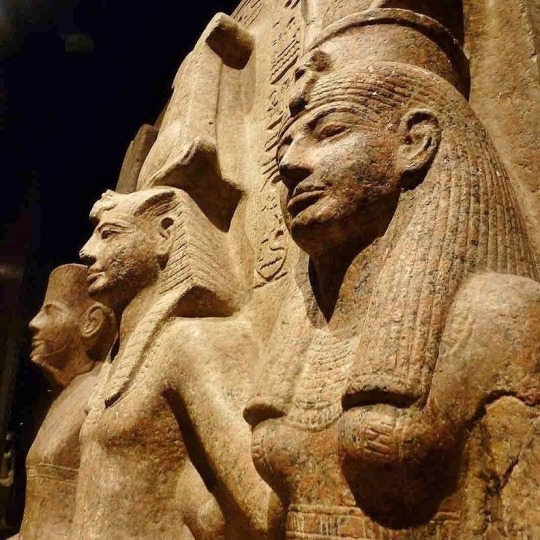
Granite statues of Ramses II flanked by the god Amun-Ra and the goddess Mut. Karnak, called in Ancient Egypt Ipet sut, "the most revered place".
Egyptian Museum of Turin
316 notes
·
View notes
Text
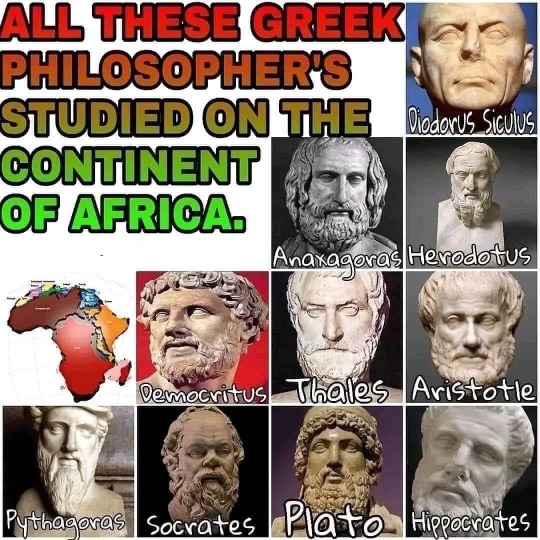
GREEKS GOT THEIR EDUCATION IN AFRICA
From 1900 to 1100 B.C., a great civilization reigned over what is now present-day Greece. The Mycenaens created works of art, established trade with other nations and lived in great cities. And then suddenly, mysteriously, the Mycenaean culture collapsed. Greece fell into darkness.
Nomadic tribes came from the North to where a bustling, urbane civilization once stood. Trade ceased, and Greece turned inward. For 500 years Greece stood silent, in what historians now call the Greek Dark Ages. And then, almost overnight in historical terms, a new dawn broke over Greece. Homer created his epic poems the "Iliad" and the "Odyssey," emphasizing honor and virtue to his new countrymen. Trade resumed, once separate city-states united into a democratic republic. Classical Greece was born.
Where did this meteoric rise to prominence come from? Scholars attribute much of Greece's development to its internalization. For 500 years it was peacefully allowed to redevelop itself, astoundingly without any outside threats. But the loftiest of the pursuits of the Greeks would not have been possible were it not for another nearby civilization, one that was established millennia before even Mycenae was founded. The culture was called Kemet. You know it as Egypt.
The civilization that built the Sphinx, raised the pyramids and built the world's first library also produced the world's first physician, created geometry and astronomy and were among the first to explore the nature of our existence. And they passed their knowledge along to the Greeks. Modern people, in turn, have benefited greatly from this early education.
It's well-documented that classical Greek thinkers traveled to what we now call Egypt to expand their knowledge. When the Greek scholars Thales, Hippocrates, Pythagoras, Socrates, Plato and others traveled to Kemet, they studied at the temple-universities Waset and Ipet Isut. Here, the Greeks were inducted into a wide curriculum that encompassed both the esoteric as well as the practical.
Thales was the first to go to Kemet. He was introduced to the Kemetic Mystery System -- the knowledge that formed the basis of the Kemites' understanding of the world, which had been developed over the previous 4,500 years. After he returned, Thales made a name for himself by accurately predicting a solar eclipse and demonstrating how to measure the distance of a ship at sea. He encouraged others to make their way to Kemet to study [source: Texas A&M].
In Kemet, Hippocrates, the "father of medicine," learned of disease from the previous explorations of Imhotep, who established diagnostic medicine 2,500 years earlier. This early renaissance man -- priest, astronomer and physician -- was described as "the first figure of a physician to stand out clearly in the mists of antiquity" by the British medical trailblazer William Osler [source: Osler]. In Kemet, Pythagoras, the "father of mathematics," learned calculus and geometry from the Kemetic priests based on a millennia-old papyrus.
None of this is to say that the Greeks were without their own ideas. On the contrary, the Greeks appeared to have formed their own interpretations of what they learned in Kemet. Nor did the Greeks ever deny the credit due the Kemites for their education. "Egypt was the cradle of mathematics," Aristotle wrote [source: Van Sertima]. But one could make the case that the Greeks also felt that they were destined to build upon what they'd learned from the Kemites.
The Kemetic education was meant to last 40 years, although no Greek thinker is known to have made it through the entire process. Pythagoras is believed to have made it the furthest, having studied in Kemet for 23 years [source: Person-Lynn]. The Greeks seem to have put their own spin on what knowledge they'd learned.
Plato's education may have expressed it best: The Kemetic Mystery System was based upon a wide array of human knowledge. It encompassed math, writing, physical science, religion and the supernatural, requiring tutors to be both priests and scholars.
References
1. James, George G. M.,(March 3, 2010).Stolen Legacy: The Egyptian Origins of Western Philosophy". Kritike: An Online Journal of Philosophy. 3 (2): 167–170. doi:10.3860/krit.v3i2.1536. ISSN 1908-7330
2. Bowman, Alan Keir. 1996. Egypt After the Pharaohs: 332 BC–AD 642; From Alexander to the Arab Conquest. 2nd ed. Berkeley: University of California Press
3. Ellis, Simon P. 1992. Graeco-Roman Egypt. Shire Egyptology 17, ser. ed. Barbara G. Adams. Aylesbury: Shire Publications, ltd.
22 notes
·
View notes
Text
Ough i want to play gw2 again
#i can see if i can get it running#but i do NOT want to play it alone again tbh#ipetes is just so... augh
4 notes
·
View notes
Text
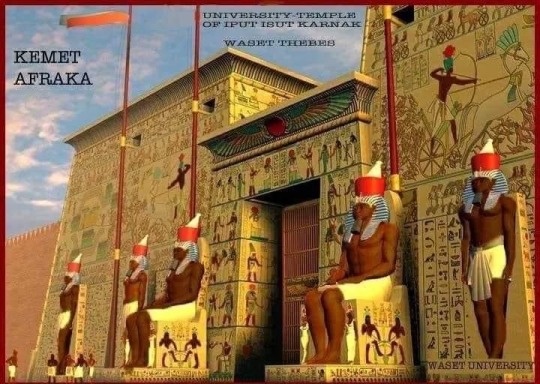
THE OLDEST UNIVERSITIES IN THE WORLD
Contrary to what many would have expected, the oldest universities in the world are located in Africa, not in ancient Greece or Europe, a study has revealed. Going by the results of the research, the foundation for the US first university was laid as late as in 1636 while the oldest university in Europe, the University of Bologna in Italy was founded in 1088 years after Africa had established universities, followed by the University of Oxford in the United Kingdom, which was founded in 1096. According to the research by Erudera, the oldest universities in the world are located in Egypt, Morocco and Mali respectively.
The Kemetic temple universities
The libraries of Kemet were not only places of archives, sacred words, papyrus manufacturing, and the like, they were also centers of learning, that combined the functions of their libraries and temples into universities.Hence Kemet became a land of temples, libraries, and universities. As
a result, the "temple-library-university" became the key center of ancient Kemetic intellectual
and spiritual activity. Ancient Kemetic temples like Waset and Ipet Isut are the oldest universities on planet earth. The Temple of Waset is the world's first university and was built during the reign of Pharaoh Amenhotep 111 in the XV111 Dynasty, 1405-1370 B.C. while the Ipet Isut temple was built during the reign of Senusert I of the 12th dynasty, who ruled from 1971-1926 BC.
Al-Qarawiyyin University, Morocco (859 CE - Present)
The second oldest standing university on earth is in Morocco. Known as Al-Qarawiyyin, the university was founded by a young princess in 859 A.D. by Tunisian-born Fatima al-Fihri in Morocco’s Fez. According to the United Nations, Guinness World Records, Manchester University Press and other credible sources, al-Qarawiyyin is the oldest university of the world still in use today.
Timbuktu University Mali (989 CE – Present)
The University ofTimbuktu is a collective term for the teaching associated with three mosques in the city of Timbuktu in what is now Mali: the masajid (mosques) of Sankore, Djinguereber, and Sidi Yahya. This third oldest University in the world is one of three ancient centres of learning located in Timbuktu, Mali. It was officially established in 13BC and it prospered and became a very significant seat of learning in the world, especially under the reign of Mansa Musa (1307-1332) and the Askia Dynasty (1493-1591). The University of Sankore has its roots in the Sankore Mosque which was founded in 989 ADby Al-Qadi Aqib ibn Mahmud ibn Umar, the Supreme Judge of Timbuktu.’ At its peak, long before Europeans built universities, the university at Timbuktu had an average attendance of around 25 000 students within a city of around 100 000 people.
All of the universities of Timbuktu predate Islam and were originally learning centers for Dogon and Meroitic sciences, which flourished throughout the Sahel. Islam did not introduce universities to Timbuktu, Islam appropriated the indigenous African universities already in Timbuktu (as well as numerous other ancient African cities) and turned them into masjids. The Timbuktu Meroitic universities were appropriated into masjids in 989 ce. This is over 1,200 years after the original university was established.
However, despite the religious shift of the universities, their architectural heritage remains faithful to the indigenous pre-Islamic Sahelian adobe architecture.
Credit: @Africa Native
40 notes
·
View notes